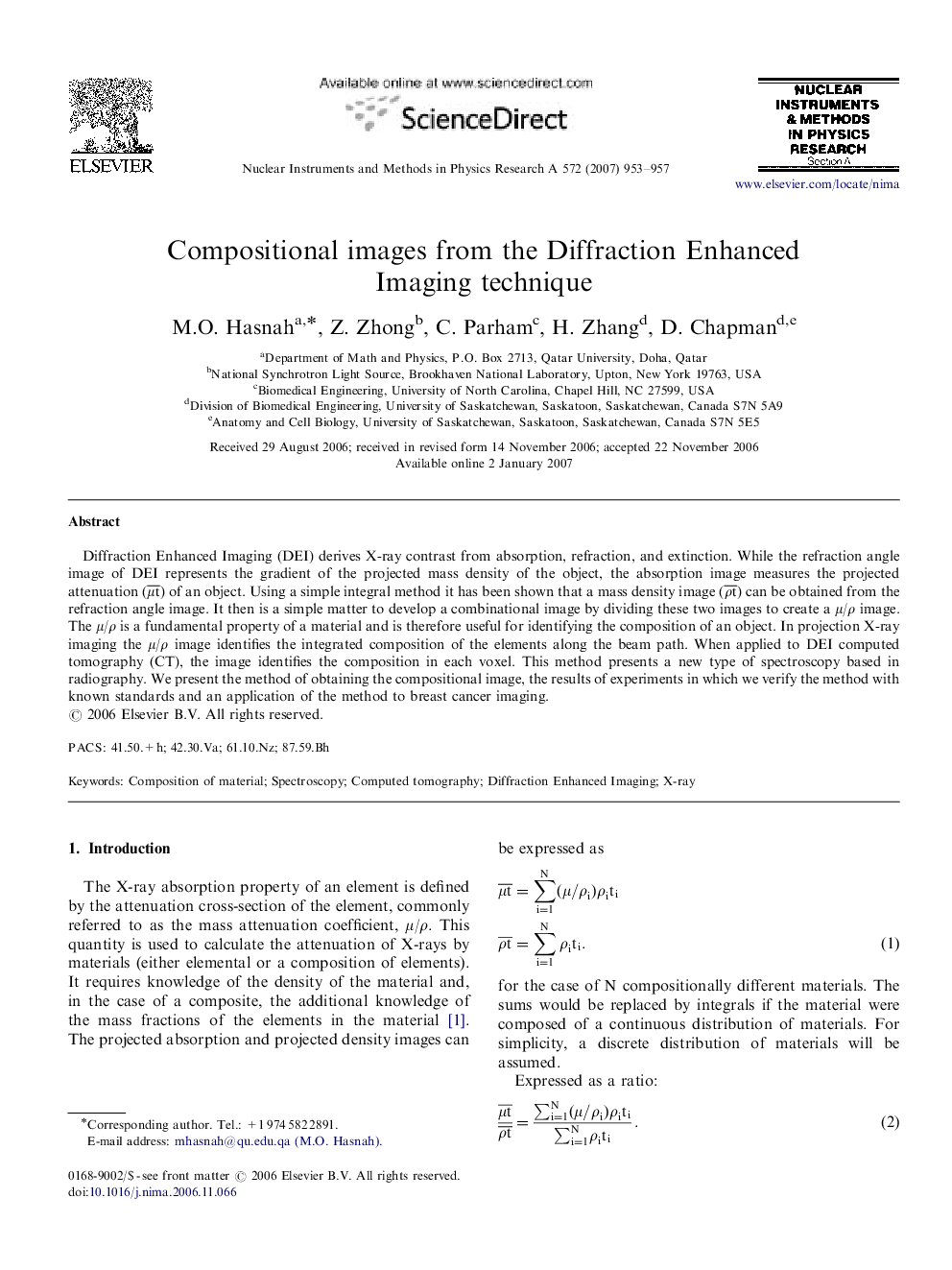| Article ID | Journal | Published Year | Pages | File Type |
|---|---|---|---|---|
| 1830945 | Nuclear Instruments and Methods in Physics Research Section A: Accelerators, Spectrometers, Detectors and Associated Equipment | 2007 | 5 Pages |
Diffraction Enhanced Imaging (DEI) derives X-ray contrast from absorption, refraction, and extinction. While the refraction angle image of DEI represents the gradient of the projected mass density of the object, the absorption image measures the projected attenuation (μt¯) of an object. Using a simple integral method it has been shown that a mass density image (ρt¯) can be obtained from the refraction angle image. It then is a simple matter to develop a combinational image by dividing these two images to create a μ/ρ image. The μ/ρ is a fundamental property of a material and is therefore useful for identifying the composition of an object. In projection X-ray imaging the μ/ρ image identifies the integrated composition of the elements along the beam path. When applied to DEI computed tomography (CT), the image identifies the composition in each voxel. This method presents a new type of spectroscopy based in radiography. We present the method of obtaining the compositional image, the results of experiments in which we verify the method with known standards and an application of the method to breast cancer imaging.
